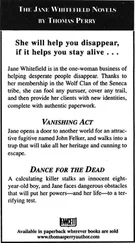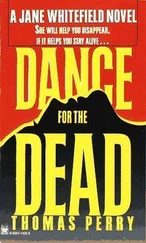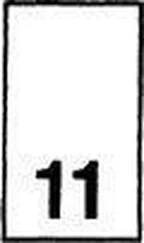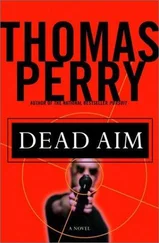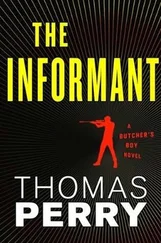It was a pump shotgun set up on a table using a bench rest designed for zeroing in a rifle at a range. There was a thin wire running across the closed bedroom door, through an eyebolt screwed into the woodwork on the wall beside the door, through another one in the wall behind the shotgun, then attached to a piece of wood set inside the trigger guard just in front of the trigger. When the door opened, the shotgun would blast the intruder at the height of the table, about thirty inches above the floor. For someone standing upright, the blast would hit the lower abdomen. It was a prolonged, painful death.
Jane stayed at the double door on the balcony studying the room to spot signs of more traps. She saw nothing, so she slid the blade of her knife between the two doors, lifted the latch, then stepped aside and placed her back to the wall before she tugged the right door open.
She remained still and listened. There was no gunshot, no sound of an alarm system, no low growl of a dog that he'd locked in. She leaned in far enough to see all sides, but kept her feet planted until she was sure there was no threat in this room but the spring gun. She stepped carefully to the shotgun, clicked the safety in so the red stripe disappeared, removed the piece of wood from the trigger guard, and let the wire go slack.
The spring gun had been aimed at the closed door that led out of the bedroom to the hallway. She stepped to the door and listened. She stepped back a pace. Something was wrong. There was no sound out there. Nobody was on the other side waiting for her, but she sensed that the spring gun she had disarmed couldn't be all. That wasn't the way this man thought. He was a murderer who had framed his victim's husband for the murder and then tried to get him killed in prison. One strike, one murder, one trap would not be enough for him.
As she thought, she knew what it must be. There would be a second spring gun in the hallway, aimed at the outside of the bedroom door. If she entered the bedroom through the balcony doors, as she had, she would see the spring gun in the bedroom and disarm it, and then confidently open the door. The second spring gun, the one in the hallway that she had never imagined, would go off and kill her. If instead she had entered the house another way and come along the hallway toward the bedroom door, she would disarm the spring gun in the hallway and then be killed by the one trained on the door from inside the bedroom. It was a simple, elegant way to build a booby trap: disarming the first gun didn't make you safe; it made you only a confident victim of the second.
She used her knife to unscrew the doorknob and remove it from the inside, then pushed the outer knob out of its hole and let it fall to the floor in the hall.
Through the circular hole where the doorknob had been mounted, she could see the dimly lit hallway. Exactly as she had predicted, there was a second table with a shotgun mounted on a bench rest, aimed at her. She followed the trip wire with her eyes. It ran from the piece of wood in the trigger guard to an eyebolt screwed into the surface of the table behind the shotgun, and then straight to the bedroom door. Since the door opened inward, any attempt to open it would pull the trigger and kill the person coming out of the bedroom.
Jane studied the spot where the wire led to the door, then worked with her knife to carve away the wood from that part of the door. It was taking time, but Jane had already determined that Daniel Martel wasn't here. If he showed up now, she would hear his car through the open balcony doors. She kept working until her blade scraped the screw end of the eyebolt. When she freed the bolt from the door, she heard a clink. She put her eye to the hole and saw the bolt and the slack trip wire on the floor.
She pulled the door open and walked to the shotgun. She pushed the safety on and continued down the hall. There were four more bedrooms up here, but none of them had any furniture. There were just polished hardwood floors and spotless white walls.
Because stairways were easy places to plant booby traps, Jane used great care in descending to the first floor. She kept her feet on the outer edges of the stairs, where she could see what she was stepping on. When she reached the bottom, she found an insulated wire and followed it to a pressure pad Martel had installed under the runner on one of the steps.
She could feel the man's mind at work. He had a problem. He had murdered a woman and framed the woman's husband. The husband was always the easiest one to get the police to accept, because most female murder victims were killed by male family members or friends. Probably Martel had always planned to have the husband murdered in prison, because as long as the framed man was alive, someone might take a second look at the crime. When Jane had taken Jim Shelby away from him, he had sent eight men after her, and this must have struck him as no more than prudent. She had buried the eight, and disappeared again. Clearly he was now aware that she was coming for him, and he was retreating and leaving booby traps in his wake, not staying to wait for her.
She searched, moving methodically through Daniel Martel's house from room to room, opening all the spaces where things might be hidden. She searched for photographs of Daniel Martel. She searched for medicines in the cabinets that might indicate a chronic illness or an addiction. She examined the figurative paintings to see whether any of the landscapes might be pleasant places he had visited once and might return to if he felt he had to lie low for a period of time.
When she had been everywhere on the ground floor, she climbed the stairs again to look in the master suite. She opened the walk-in closet and the lights went on auto-matically. The poles where clothes were hung had been disarranged, with some clothes taken and the other hangers pushed to the sides. She studied the clothes that remained to see whether he had been searching through the cold-weather clothes, taken hiking boots or beach sandals, taken expensive suits and shoes or left them. To her it appeared that he had left out the extremes. Judging from the locations of the empty hangers, he had apparently taken something from the jeans section, several shirts, a couple of sport coats, and a windbreaker or light jacket. The shoes were in rows of small cubbyholes. There seemed to be a pair of sneakers or running shoes gone, and a pair of dress shoes, probably brown, since that was the color of the others in that row.
She pushed some hangers aside. There was a compartment built into the back wall. It wasn't a safe, just a doorless cabinet that must have been hidden by a set of shelves on rollers that he had pushed aside. She looked inside to see if she could determine what he had chosen to take. There was an empty envelope with the return address of the West Valley Bank printed on it, the kind a teller would offer if you withdrew too much cash to carry in a pocket. There was a second envelope, this one with the return address of the county clerk in Dayton, Ohio. The name of the addressee had apparently been typed on a sticker, and it had been torn off. The receipt inside said that it was for a duplicate of a birth certificate, but not the name of the baby. There was another envelope that was from Sioux Falls, South Dakota, and said, "Do Not Forward." It had to be a credit card he'd ordered in a false name.
He was running, and that put him in a world she knew better than he did.
She took her rope from the balcony, closed the doors, went down the stairs, and stepped across the never-occupied living room and out the front door. When she reached her car, she started it and drove to the first freeway entrance and turned north. At this hour, it would only take a few minutes to reach the 101 freeway, and then the junction with the 134. In an hour she'd be nearly to the edge of the desert at Victorville, and she would be in Las Vegas by morning.
Читать дальше



